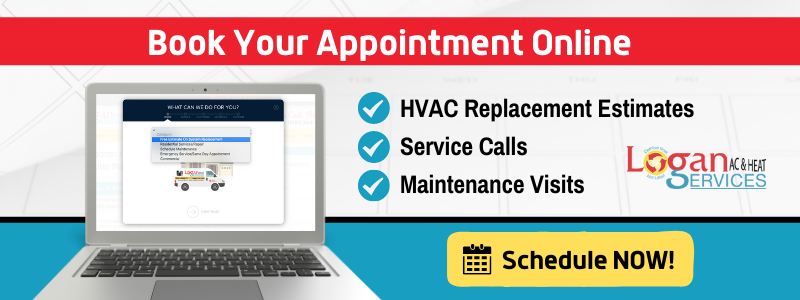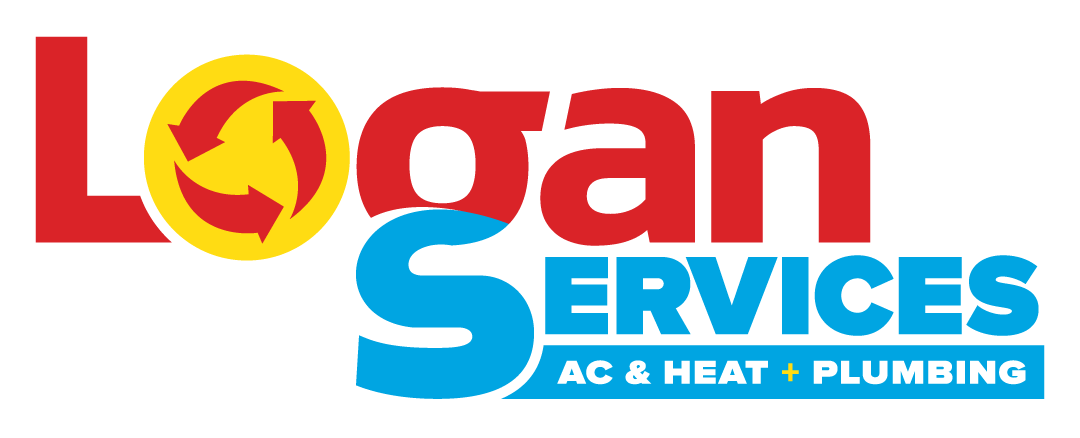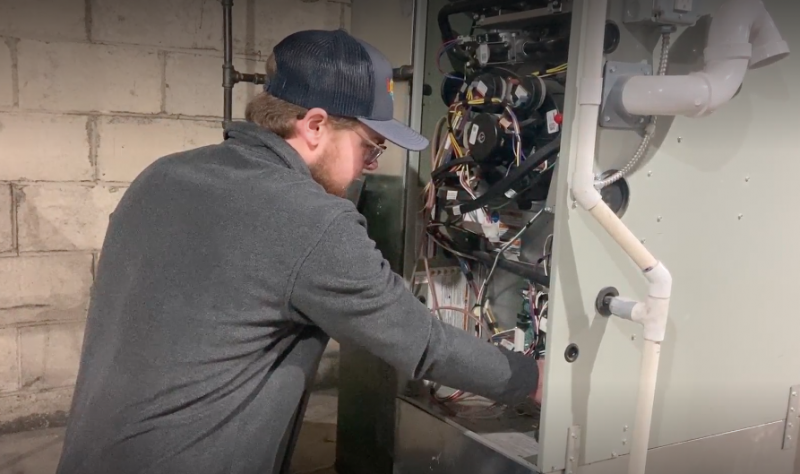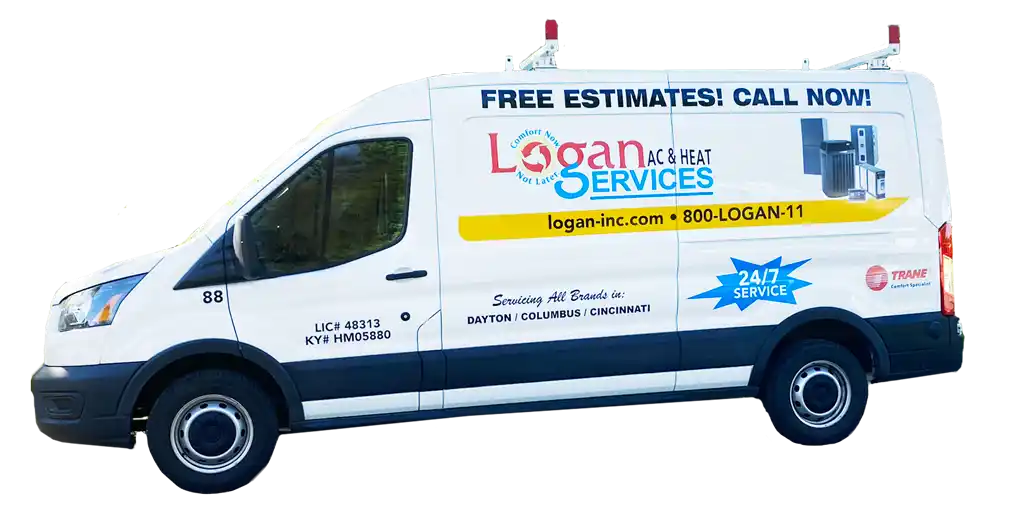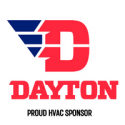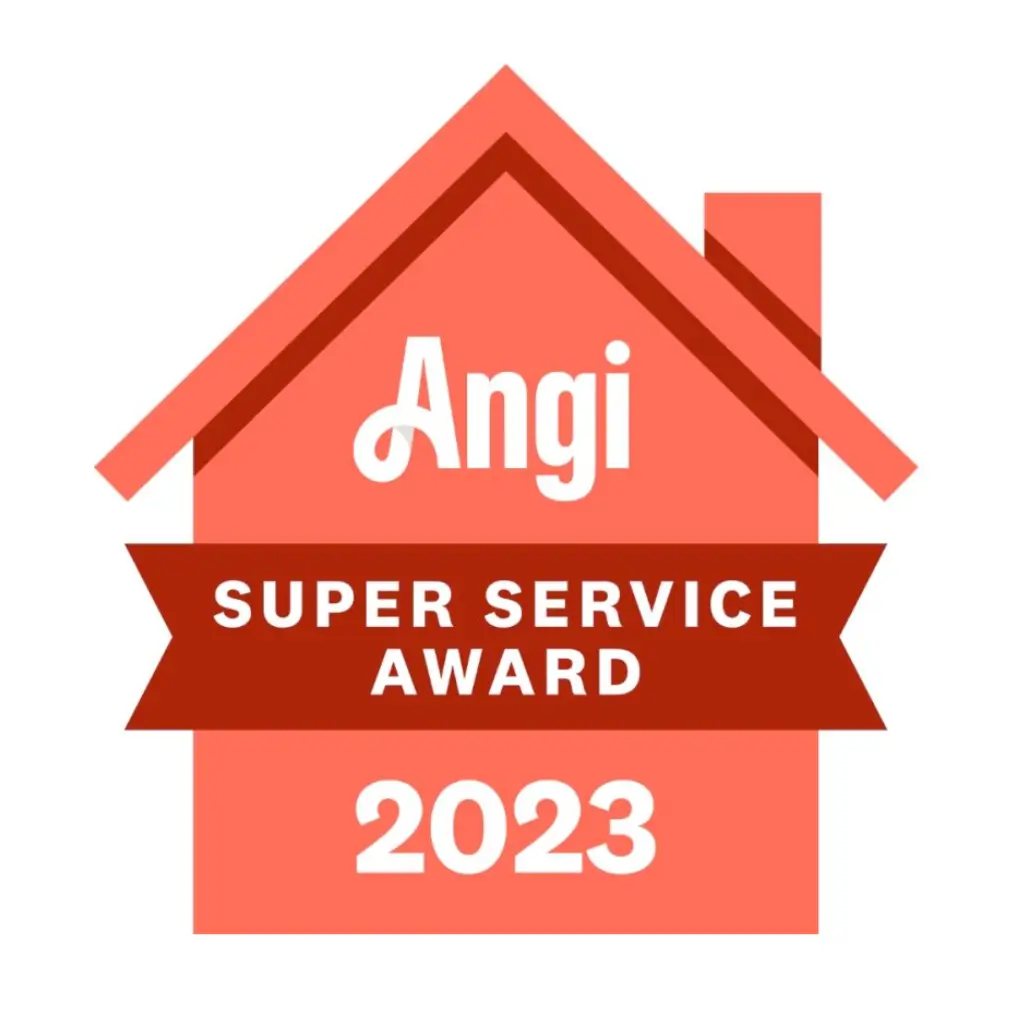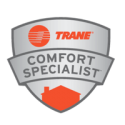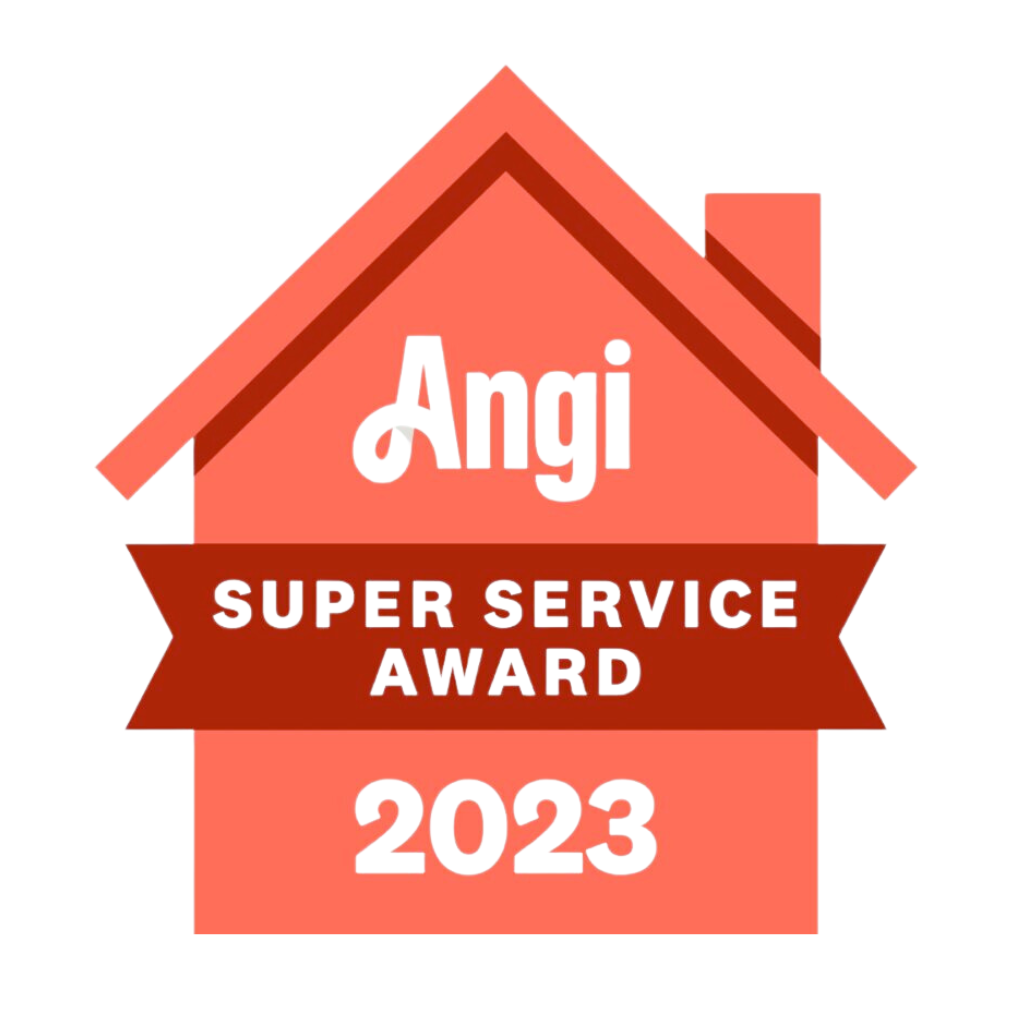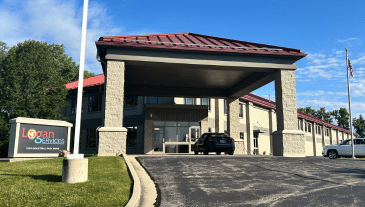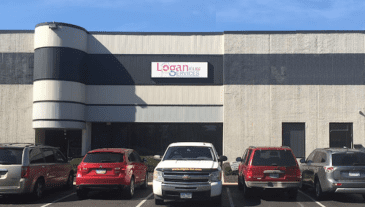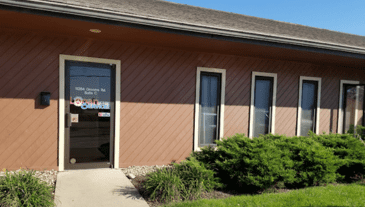Whether you’re being proactive or you have a broken furnace, it’s important to choose a reputable HVAC company to install your new furnace. Unlike other appliances, such as a new refrigerator or oven, your furnace requires a thorough process to properly and safely install for home use and cannot be simply set in place and plugged in.
Gas furnace installation is no ‘DIY’ project. Read on to learn about the steps that our highly trained HVAC installers go through to bring comfort to your home in the heating season.
Before the Furnace Installation
Prior to unboxing your new furnace, our installation team will arrive at your home and get familiar with the spaces they will be working in. They will wear shoe covers and lay down drop cloths in places that they will be traveling through inside your home.
Whether located in a basement, crawlspace, utility closet, garage, or attic, we will require access to your existing furnace. Our installers will also need to be able to get to your electric panel/breaker box. If you are having a humidifier installed, we will also want to locate the water lines. Once the workspaces have been defined and prepped, we will begin removing the old furnace from the home.
Furnace Installation: Step-by-Step
Now it’s time to do what we do best! Our furnace installation team works diligently throughout the day to follow the following steps to complete your new heating system set up:
- Read the Manufacturer’s Instructions : The manufacturer instructions are referenced throughout the installation process. While our technicians are well-trained to perform the gas furnace installation, there are readings and factory standard settings that are specific to each unit that we need to match up with that we will be using as a guide from beginning to end.
- Prepare Your Site : After the old furnace is removed, we may also require removing some other connecting ductwork and flue pipes to allow the new furnace to be inserted. Other preparation steps will include turning off the gas line and electric to the furnace and air conditioner, as well as bringing in and unboxing the new heating equipment.
- Decide Where Your Duct and Drain Will Run : Depending on the configuration of your furnace and main duct run, our HVAC installer will insert the new heating unit in place and then assess the best location to set up your drain, PVC pipes, and duct work that your furnace will connect to.
- Connect to the Ducting System : Often an overlooked skill of an HVAC installer, creating a clean, aesthetically pleasing duct run from the furnace to the main ductwork is key to a great furnace installation. Working with sheet metal can be a tedious, yet important part of the project, and our HVAC installers are experts.
- Connect Vent Pipes : Proper vent pipe connecting is crucial to a safe gas furnace installation. Because the vent pipes function to bring CO out of the home, it’s very important to ensure those pipes are configured and sealed thoroughly.
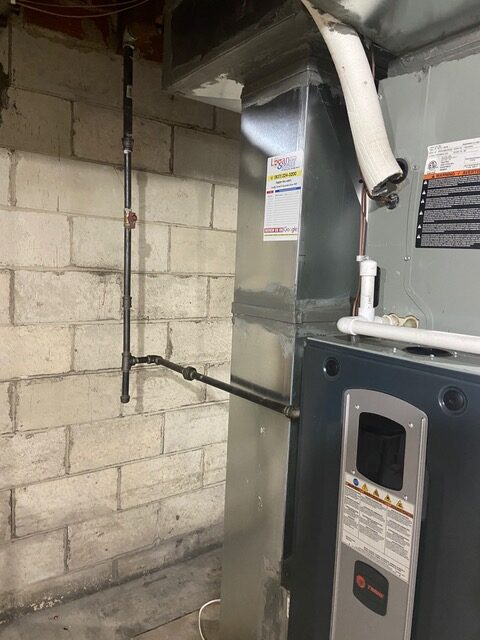
- Connect Gas Supply : Now that the vent pipes are connected, it’s time to bring the gas lines into the gas valve of the new furnace. Another important step to be thorough on, the gas supply needs to be properly installed into the gas furnace to avoid a dangerous leak.
- Connect Electrical Supply : Your new furnace will need to be wired with low and high voltage connections based on the manufacturer’s instructions and local building codes. The electrical supply includes the low voltage connections between the thermostat, furnace, and outdoor unit. The furnace needs to be properly connected to ensure all the equipment works together properly to provide comfort to the customer. Done incorrectly can result in the system shutting down, poor performance or one part of the system not working. The high voltage also needs the proper sized breakers and fuses to meet code and act as a safety measure to protect the equipment and customers.
- Connect Condensate Drain : The condensate drain functions to keep water from backing up and flooding around the bottom of your furnace. At this point of the installation, it’s time to connect the PVC pipes to direct any water to the condensate drain/pump.
- Check Your Work : It’s almost time to test the system; prior to firing up the furnace for the first time, our installers will go through a series of pre-checks to make sure that the previous steps were followed and completed properly.
- Test Run It : Once our installers are confident that the furnace set up has been done correctly, they will turn the electric and gas supply back on and start up the furnace for the first time and assess the operation. They will also go through a series of readings and settings that are necessary to monitor and program, both at the furnace and at the thermostat upon the initial run. Once those settings have been completed, our team will attach the main furnace panel onto the new heating system and begin their post installation conversation with the customer.
After Your Furnace Installation
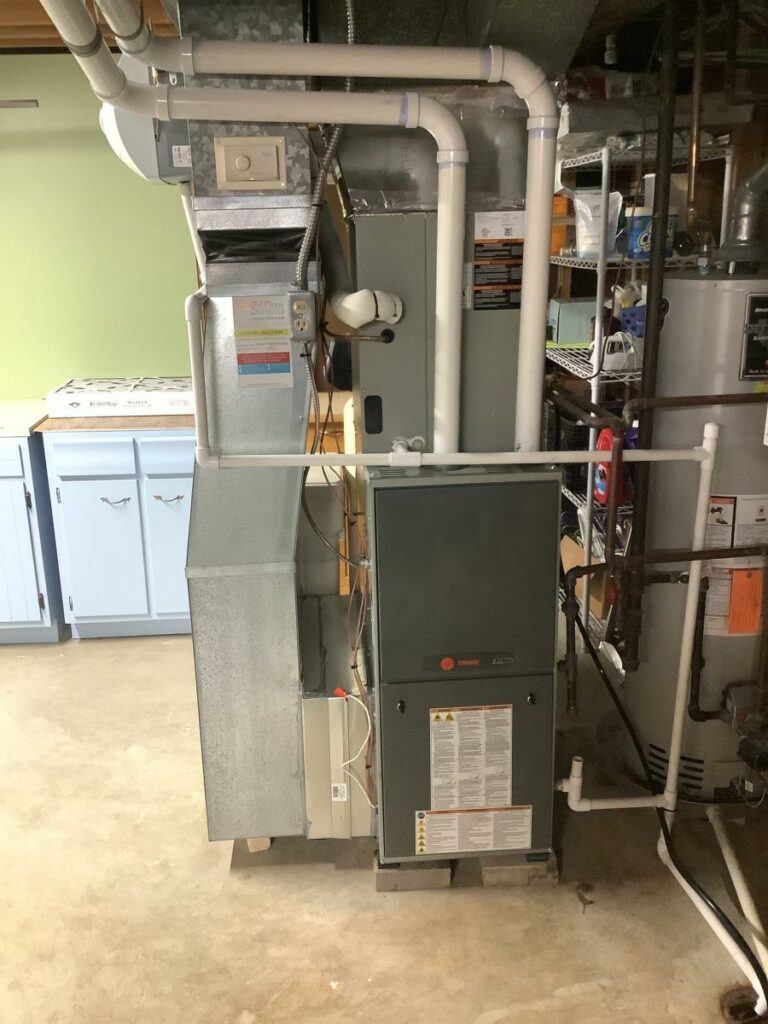
Once your gas or electric furnace installation is complete, you will be provided with operational instructions and tips for how to utilize the new thermostat. In many cases, you will be able to utilize an app on your phone or tablet that will allow you access your thermostat from wherever you are; the installation team will help you to set up that app and provide you with instructions on how to operate your HVAC system on it. Our team will answer any of your questions that you may have about the installation process or what to expect moving forward. Next, our installers will clean up their workspaces and move all their tools to their van.
Prior to leaving your home, a Logan Services’ quality assurance checklist will be referenced and tracked to ensure that the key steps of the furnace installation process have been accomplished. Your HVAC installer will go over this checklist with you, as well as offer you the opportunity to ask any further questions. Finally, when all your expectations have been met (and most often exceeded), our team will leave you to enjoy the comfort of your new heating system.
In the days following your furnace installation, depending on the county that you live in, you may be required to perform an HVAC inspection. Our team will provide you with the information to schedule that with your county HVAC inspector. This is your chance to have a third-party expert check that the system has in fact been installed up to code and ensure that it is safe for operation. If this inspection does require any follow up items from our team, we provide a prompt resolution at no cost to you.
The Importance of Good Furnace Installation
Often overlooked by people searching for ‘the best HVAC brand’ or ‘the best price’ for furnace replacement, the COMPANY that you have install your home furnace system is as much or more important to the value of your investment. Simply put, the best furnace available will never be the best if it is not installed correctly. For this reason, it’s so crucial to choose an HVAC company who has a great reputation for customer satisfaction, professionalism, and highly trained, experienced furnace installers to complete your new energy efficient gas furnace replacement.
Logan Services prides themselves on their furnace installation process and the quality assurance checklist that is completed one the replacement is done. This additional post-installation process that we follow helps us assure that you have an excellent furnace installation, giving you peace of mind that you’ve made the best decision with your investment.
Furnace Maintenance Tips
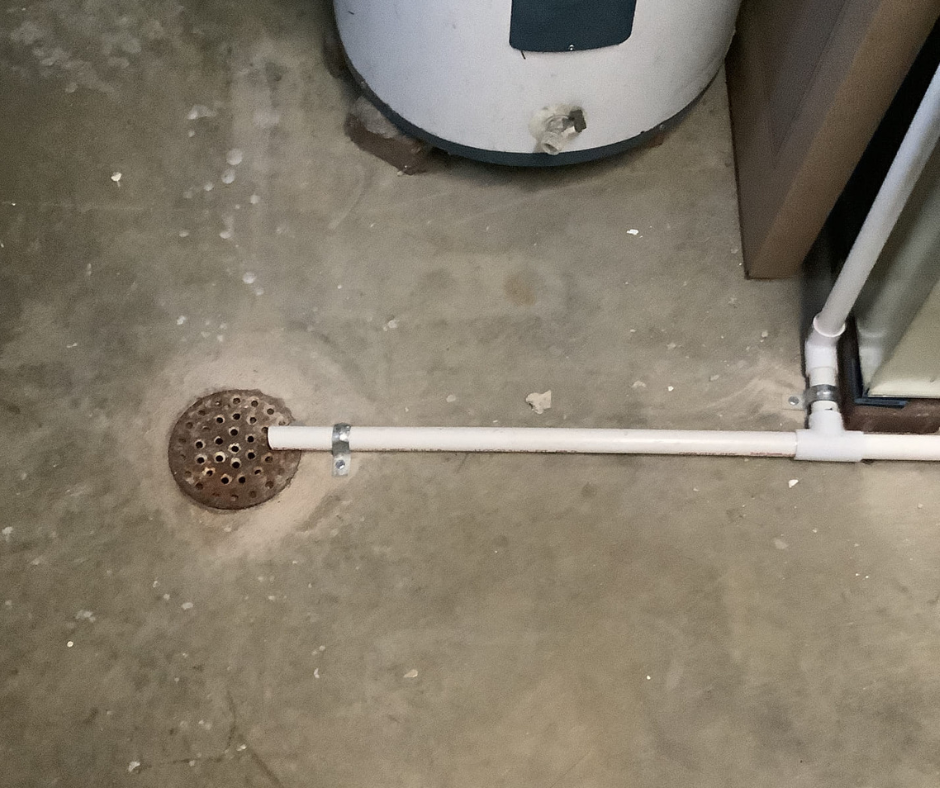
Now that you have a new, reliable gas furnace, it’s key to know that there are many ways that you can ensure that you protect and preserve your home investment and help to keep help to keep your energy bills down. Here home heating system:
- Change your furnace filter monthly
- Clean your condensate line
- Schedule annual maintenance
- Keep debris free from your outdoor furnace exhaust pipe
- Call for help at the first sign of a furnace malfunction
Trust the experts at Logan Services for all your gas furnaces installation, repair, and maintenance needs this season. We pride ourselves on our Same-Day Estimates and Next-Day Installation, and we welcome you to contact us for your air conditioning and furnace installation project today!
FAQs
Does a cracked heat exchanger mean that I need to replace my furnace?
A cracked heat exchanger can result in a very dangerous situation: a carbon monoxide leak. If a crack in the heat exchanger has been found in your furnace, you’ll want to start thinking about furnace system replacement, as it is often more cost-effective to replace the whole furnace altogether, rather than just that heat exchanger.
Should I replace my oil furnace with a gas furnace?
If you have an oil furnace, you are accustomed to a very ‘warm’ heated air, however, heating with oil does have its downfalls. It is more expensive to purchase oil than gas, maintenance is required more often due to the additional soot and dirt and oil furnace yields, and they tend to operate less efficiently. For these reasons, when furnace replacement is nearing, we highly recommend replacing your oil furnace with a natural gas or propane furnace.
What is the lifespan of a typical furnace?
When a furnace is well-cared for and maintained, you could expect to see 15+ years of good operational use. The quality of brand and installation, maintenance and filter replacement, and severity of repairs made to the system throughout the years will determine just how long it will serve to heat your home. You may notice at the 12-year mark or even the 20-year mark that there is a significant loss in efficiency, which would be directly reflected on your utility bills. At that point, it may still be operating fine, but at a cost to your wallet.
